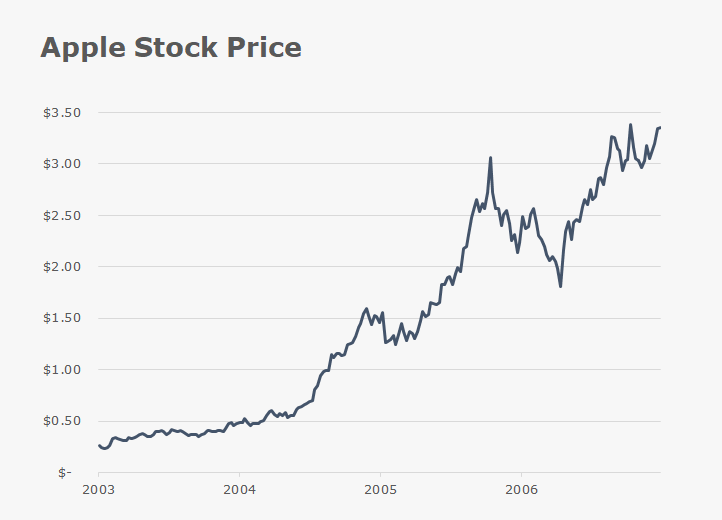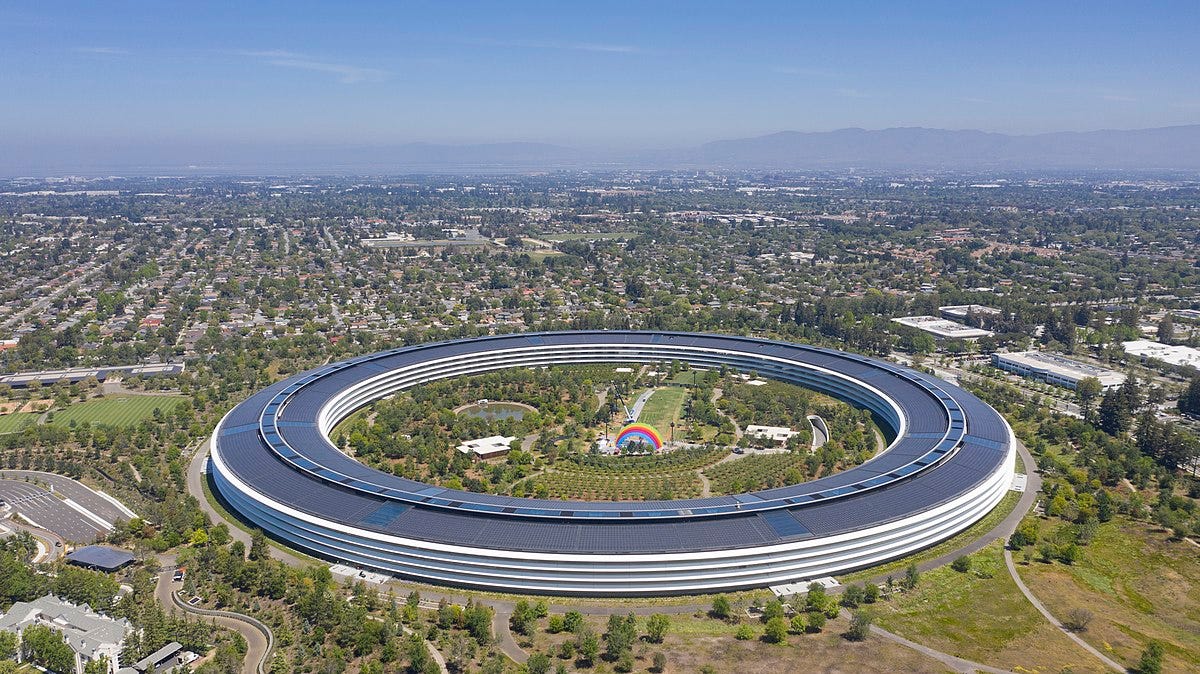iRevenue
This is the best chart we could create that shows the iPhone’s impact.
From 2006 to 2020, Apple grew revenue 15x in 15 years, from $19 billion in revenue in 2006 to $275 billion in 2020, largely due to the iPhone. In fact, 90% of Apple’s revenue today is from products that did not exist in 2006.
We all know what Apple is today. They create phones, computers, tablets, watches, headphones and smart devices; and manage web browsers, digital wallets, credit cards, a streaming service, online stories, and a health/fitness service.
This edition will take us back to 2006 - the year before the iPhone was released. What products did Apple create? How much money did they make? What were people saying about the future of the company? Let’s dive in.
Back to the past
Ok we’re going back in time, but not that far back. This story takes place in 2006, the year before the first iPhone was released.
In 2006, Apple ranked 159th on the Fortune 500 list, sitting comfortably between US Steel (didn’t know that was still a thing) and Qwest Communications (a regional telecommunications company that has since been acquired).
So Apple, formerly known as Apple Computer Inc, was a large company, but not the behemoth it is today. Let’s look at Apple’s revenue from 2001 through 2006.
Apple caught a huge wave with the release of the iPod in 2001. The iPod was not an overnight sensation as seen by the iPods revenue numbers in the dark blue column. Within three years of its release, Apple started to make significant revenue from iPods and it eventually became Apple’s top product by 2005.
Other than the iPhone and iTunes, Apple was just a computer company. In 2002 the majority of Apple’s revenue was from their desktop and laptop computers.
Here is what Barron’s, a finance publication, had to say about Apple in a July 2006 article:
Judging from its stock price, you'd think Apple Computer only made iPods. The shares, which soared more than 10-fold in the three years through this January, largely on excitement about the portable music players, have since plunged by 40%, to about 51, mostly on fears that the iPod craze is losing steam.
The market is missing something. Hint: Look at that second word in the company's name. Despite the spectacular success of its iPods, Apple (ticker: AAPL) remains rooted in its Macintosh personal computers. And Macs, after a major overhaul, are now poised to grab some real market share.
While the article did undervalue the iPod’s growth (iPod revenue still grew 76% in 2006), Barron’s was clear that Apple was a computer company that happened to hit it big on a side product.
Here is Apple’s stock chart from 2003 to 2007.
Note that these prices are in comparison to today’s stock price (aka adjusted for stock splits). Apple’s stock price as of publishing is $125 per share.
What people were saying
Investors agreed with Barron’s that Apple should turn their focus back to computers. Here are some great quotes from the article:
"The stock needs to transform from an iPod stock to a computer stock," says Walter Price, managing director of Alliance Global Investors.
The analyst figures that Jobs, who co-founded Apple, is throwing himself into the Mac initiative. 'The Macintosh is his baby, [and] I think he looks at this as an opportunity to build Apple up beyond the iPod," Wolf says.
The article paints the picture that most analysts were upbeat about Apple’s stock. Even after the stock grew 6x in three years, many analysts said the it was undervalued due to Apple likely growing their market share in the computer space.
The stock analysts turned out to be right. Apple continued to increased market share in the computer segment and increased their Mac revenue 200% in five years.
The iPod Smartphone
Buried in the middle of the Barron’s article was an interesting nugget.
Apple declined to make Jobs or other executives available for this story, but there's no shortage of speculation about what sort of products the company is working on.
On the iPod front, an update of the tiny nano, introduced nearly a year ago, is expected within six to 12 months, probably featuring more storage capacity. An iPod with a bigger screen for videos and an iPod smartphone-a cellphone that can send e-mail and serve as a personal organizer-also appear to be on the way, says Goldman Sachs' David Bailey.
But details on all such products are sufficiently sketchy to make it hard to know how much punch any of them might pack.
Little did Barron’s know they were describing the mots valuable consumer product ever created described as “a cellphone that can send e-mail and serve as a personal organizer”.
That is the only mention of the ‘iPod smartphone’ in the article which shows how close Apple kept the iPhone from the public and how little attention investors paid to Apple possibly entering the cellphone space.
Should we expect anything else from a company whose headquarters looks like this?
Epilogue
The iPhone launched in 2007 and took off like a rocket ship.
Some facts about the iPhone that seem impossible.
Apple made more revenue from the iPhone in 2015 alone than Apple made in TOTAL revenue in its first 29 years of existence COMBINED.
If the iPhone was a standalone company, it would been the 6th largest US company by revenue in 2015.
Apple grew iPhone sales by $53 billion in 2015 - from $102 billion in 2014 to $155 billion in 2015. This means that iPhone sales increased more than the following companies made in total revenue in 2015: Disney, Pfizer, FedEx, Caterpillar, Lockheed Martin, Coca-Cola, Delta, Goldman Sachs, Oracle, or American Express.












